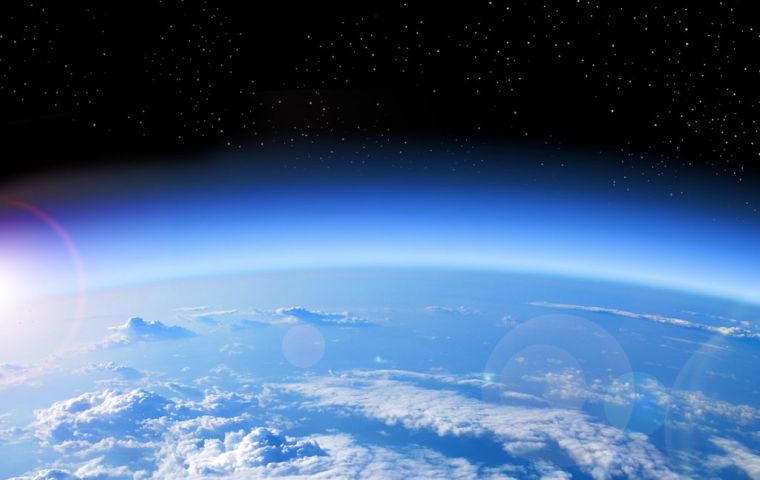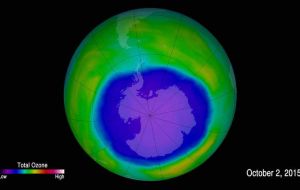MercoPress. South Atlantic News Agency
Someone is cheating with ozone warn scientists: rate of decline has fallen drastically
 The ozone layer in the stratosphere, 10-to-40 kilometers above Earth's surface, protects life on the planet from deadly ultraviolet radiation.
The ozone layer in the stratosphere, 10-to-40 kilometers above Earth's surface, protects life on the planet from deadly ultraviolet radiation.  Measurements at remote sites of the chemical, known as CFC-11, point to East Asia as the source or renewed production.
Measurements at remote sites of the chemical, known as CFC-11, point to East Asia as the source or renewed production. The decline in the atmosphere of an ozone-depleting chemical banned by the Montreal Protocol has recently slowed by half, suggesting a serious violation of the 196-nation treaty, researchers revealed Wednesday.
Measurements at remote sites -- including the US government-run Mauna Loa Observatory in Hawaii -- of the chemical, known as CFC-11, point to East Asia as the source or renewed production.
“We show that the rate of decline of atmospheric CFC-11 was constant from 2002 to 2012, and then slowed by about 50% after 2012,” an international team of scientists concluded in a study.
“This evidence strongly suggests increased CFC-11 emissions from eastern Asia after 2012.”
The ozone layer in the stratosphere, 10-to-40 kilometers above Earth's surface, protects life on the planet from deadly ultraviolet radiation.
The 1987 Montreal Protocol banned industrial aerosols such as chlorofluorocarbons (CFCs) that were chemically dissolving ozone, especially above Antarctica.
At its most depleted, around the turn of the 21st century, the ozone layer had declined by about five percent. Today, the “hole in the ozone” over the South Pole is showing clear signs of recovery.
“The ozone layer remains on track to recovery by mid-century,” the UN Environment Programme (UNEP) said in a statement, reacting to the findings.
But “continued increase in global CFC-11 emissions will put that progress at risk.” The slowdown in reduction of CFC-11 also has implications for the fight against climate change.
“Perhaps even more serious is the role of CFCs as long-lived greenhouse gases,” noted Joanna Haigh, a professor at Imperial College London, in commenting on the study.
CFC-11 still contributes about a quarter of all chlorine -- the chemical that triggers the breakdown of ozone -- reaching the stratosphere. The researchers said that the less rapid decline of CFC-11 could prevent ozone from returning to normal levels, or at least as quickly as hoped.




Top Comments
Disclaimer & comment rules-

Read all commentsEastern Asians!
May 17th, 2018 - 02:37 pm 0Commenting for this story is now closed.
If you have a Facebook account, become a fan and comment on our Facebook Page!